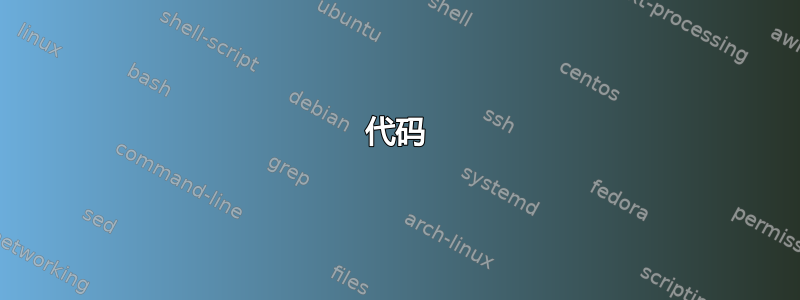
我的目标是获得类似下图的东西
我目前拥有的是
我的主要问题是我发现很难
TiKz与混合PGFplots,特别是我的图与文本相比太小,并且很难获得正确的坐标来放置文本。我确实尝试添加scale=2到axis环境中,但这会弄乱绝对节点的位置。有没有更简单的方法来粗略地估计盆地的底部?现在我拟合了一个 8 次多项式,但它只是模糊地类似于形状,而且做起来很费劲。
代码
\documentclass[a4paper,11pt]{standalone}
\usepackage{pgfplots}
\usetikzlibrary{patterns}
\usepgfplotslibrary{fillbetween}
\begin{document}
\begin{tikzpicture}
\begin{axis}[smooth,domain=0:1.65,unit vector ratio*=1 1 1,hide axis]
\addplot[name path=A,very thick,black] (\x,{-3.15*\x^8 + 15.76*\x^7 - 22.74*\x^6 - 8.8*\x^5 + 54.34*\x^4 - 52.58*\x^3 + 18.88*\x^2 - 1.71*\x + 0.01});
\addplot[name path=B,gray,opacity=0.4] (\x,{0.35});
\addplot[gray,opacity=0.4] fill between[of=A and B];
\node[] at (axis cs: 0,0.35) {Sea level};
\draw[dashed] (axis cs: 0.4,0.2) -- (axis cs: 0.4,-0.1) (axis cs: 1.65,0.35) -- (axis cs: 1.65,-0.1);
\end{axis}
\end{tikzpicture}
\end{document}
答案1
您无需尝试寻找函数,只需使用to[in=...,out=...]路径构造来绘制轮廓即可。只要 anin和后续的out相差 180 度,绘图就不会出现扭结。要回收路径,您可以使用insert path键来存储它。
\documentclass[tikz,11pt]{standalone}
\usetikzlibrary{arrows.meta,bending}
\begin{document}
\begin{tikzpicture}[scale=pi/2,thick,font=\sffamily\small,>={Latex[bend]},
hills/.style={insert path={
(0.2,1) to[out=0,in=240] (1.6,1.6) to[out=60,in=180] (2.3,2.3)
to[out=0,in=135] (3.3,1.7) to[out=-45,in=180] (5,1) to[out=0,in=210] (9.5,3)}}]
\begin{scope}
\clip[hills] -| cycle;
\fill[gray!40] (0.2,1) rectangle (9.5,2.6);
\end{scope}
\begin{scope}[thin]
\clip [hills] -- (9.5,0) -- (0.2,0)-- cycle;
\draw[dashed] (2.3,4) -- (2.3,0.3) (8.8,4) -- (8.8,0.3);
\path (2.3,0.5) coordinate (L) -- (8.8,0.5) coordinate (R) node[midway](x){$x$};
\foreach \X in {L,R} {\draw[->] (x) -- (\X);}
\end{scope}
\path (0.2,2.6) node[above right]{sea level};
\draw[hills];
\foreach \X in {1,...,5} {
\draw[->] (1.7+1.25*\X,2.6) -- ++ (0,0.8)
\ifnum\X=3
node[above]{Evaporation}
\fi; }
\draw[->] (1.8,2.5) to[bend left=10] ++ (1.8,-0.2) node[right]{inflow};
\draw[->] (3.3,1.9) node[right]{outflow} to[bend right=15] ++ (-0.6,0.4);
\draw[->] (7.2,2.5) -- ++ (0,-0.6) node[midway,left]{Precipitation};
\draw[->] (7.8,2.5) -- ++ (0,-0.4);
\end{tikzpicture}
\end{document}
或者使用颜色渐变。
\documentclass[tikz,11pt]{standalone}
\usepackage{tikzducks}
\usetikzlibrary{arrows.meta,bending}
\begin{document}
\begin{tikzpicture}[scale=pi/2,thick,font=\sffamily\small,>={Latex[bend]},
hills/.style={insert path={
(0.2,1) to[out=0,in=240] (1.6,1.6) to[out=60,in=180] (2.3,2.3)
to[out=0,in=135] (3.3,1.7) to[out=-45,in=180] (5,1) to[out=0,in=210] (9.5,3)}}]
\begin{scope}
\clip[hills] -- ++ (0,0.5) -| cycle;
\duck[shift={(4.4,2.4)},scale=0.3]
\path[top color=blue!50,bottom color=blue,opacity=0.5]
(0.2,1) rectangle (9.5,2.6);
\end{scope}
\begin{scope}[thin]
\clip [hills] -- (9.5,0) -- (0.2,0)-- cycle;
\draw[dashed] (2.3,4) -- (2.3,0.3) (8.8,4) -- (8.8,0.3);
\path (2.3,0.5) coordinate (L) -- (8.8,0.5) coordinate (R) node[midway](x){$x$};
\foreach \X in {L,R} {\draw[->] (x) -- (\X);}
\end{scope}
\path (0.2,2.6) node[above right]{Sea level};
\draw[hills];
\foreach \X in {1,...,5} {
\draw[->] (1.7+1.25*\X,2.6) -- ++ (0,0.8)
\ifnum\X=3
node[above]{Evaporation}
\fi; }
\draw[->] (1.8,2.5) to[bend left=10] ++ (1.8,-0.2) node[right]{Inflow};
\draw[->] (3.3,1.9) node[anchor=172]{Outflow} to[bend right=15] ++ (-0.6,0.4);
\draw[->] (7.2,2.5) -- ++ (0,-0.6) node[midway,left]{Precipitation};
\draw[->] (7.8,2.5) -- ++ (0,-0.4);
\end{tikzpicture}
\end{document}






